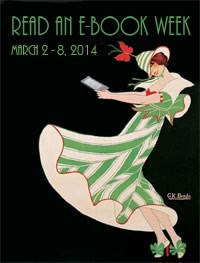The spelling of ancient Irish surnames evolved over time. Originally, they were written in the unique Irish language; a strain of the Gaelic tongue spoken by ancient Britons. During more recent centuries, these names were converted to the Anglicized versions in common usage today. In reality, the accurate spelling of a family name was of little importance to most members of the family, as they were invariably illiterate or semi-literate at best. Our Irish ancestors were more concerned with the pronunciation of names because heritage tales were passed down the generations by word of mouth, rather than in written text.
The situation regarding phonetic genealogy can become more confused by the influence of local dialects in many parts of Ireland. My own surname of Neary is only pronounced as Neary in the east of Ireland, as well as in England and America where family branches re-settled after emigration. In the west of Ireland, where the Neary clan has its roots, the family name is spoken as Narey or even Narry using the local accent. As a consequence, this is how the name appears in many old documents. The record-keepers of the day simply wrote family names as spoken by informants with very little concern for spelling accuracy.
This scenario must be borne in mind by family history researchers when delving into Irish ancestry. Often, quite bizarrely, the first step in the research process is a reassessment of “your name.” Could it be that your Irish family name, as used by every forefather in living memory, was not your name at all?
An example of this genealogy conundrum is demonstrated in the images below. A large extended family in Massachusetts, descended from Irish immigrants, were always known as McKay, McKey or Mackey – but which surname was correct. The answer was proved to be “none of the above”!
I found that my particular research subject, Irish-born John McKay, adopted and used the McKay name in America for over four decades. Most of his siblings also accepted Americanized names when establishing their own families near to Boston. As a result, when John McKay died in 1913, his US death certificate notifies the world that John McKay, originally from Tipperary and son of Patrick, died in Chatham MA, aged 95.
 I had to use many unconventional research techniques before I was able to verify that John McKay was not really a McKay, or a McKey, or a McAnything! In this case, a strange but delightful twist in the tail permits me to reveal John’s true name by displaying it “in stone” via his grave marker. It would appear that the surviving offspring of John McKay knew all along that he was not a McKay, even though the male American lineage continued to be known as McKay! As shown below, John’s real and ancient surname was respectfully engraved on to his tombstone. Note that the dates of birth and death match up perfectly with the death cert of John McKay.
I had to use many unconventional research techniques before I was able to verify that John McKay was not really a McKay, or a McKey, or a McAnything! In this case, a strange but delightful twist in the tail permits me to reveal John’s true name by displaying it “in stone” via his grave marker. It would appear that the surviving offspring of John McKay knew all along that he was not a McKay, even though the male American lineage continued to be known as McKay! As shown below, John’s real and ancient surname was respectfully engraved on to his tombstone. Note that the dates of birth and death match up perfectly with the death cert of John McKay.
 As you might appreciate, it is difficult to interrogate computer databases to investigate a chosen ancestor’s background if you unknowingly have the incorrect surname. Doubly so in this project … because John Mulcahy’s father was not called Patrick, as written clearly on his death certificate. His father was Perry, an Irish nickname for Peter – but that’s a story for another day.
As you might appreciate, it is difficult to interrogate computer databases to investigate a chosen ancestor’s background if you unknowingly have the incorrect surname. Doubly so in this project … because John Mulcahy’s father was not called Patrick, as written clearly on his death certificate. His father was Perry, an Irish nickname for Peter – but that’s a story for another day.
Merrill was obviously not the only person who left a confusing background trail to bamboozle researchers, generations later. In Merrill’s case, it was deliberate.
0.000000
0.000000







